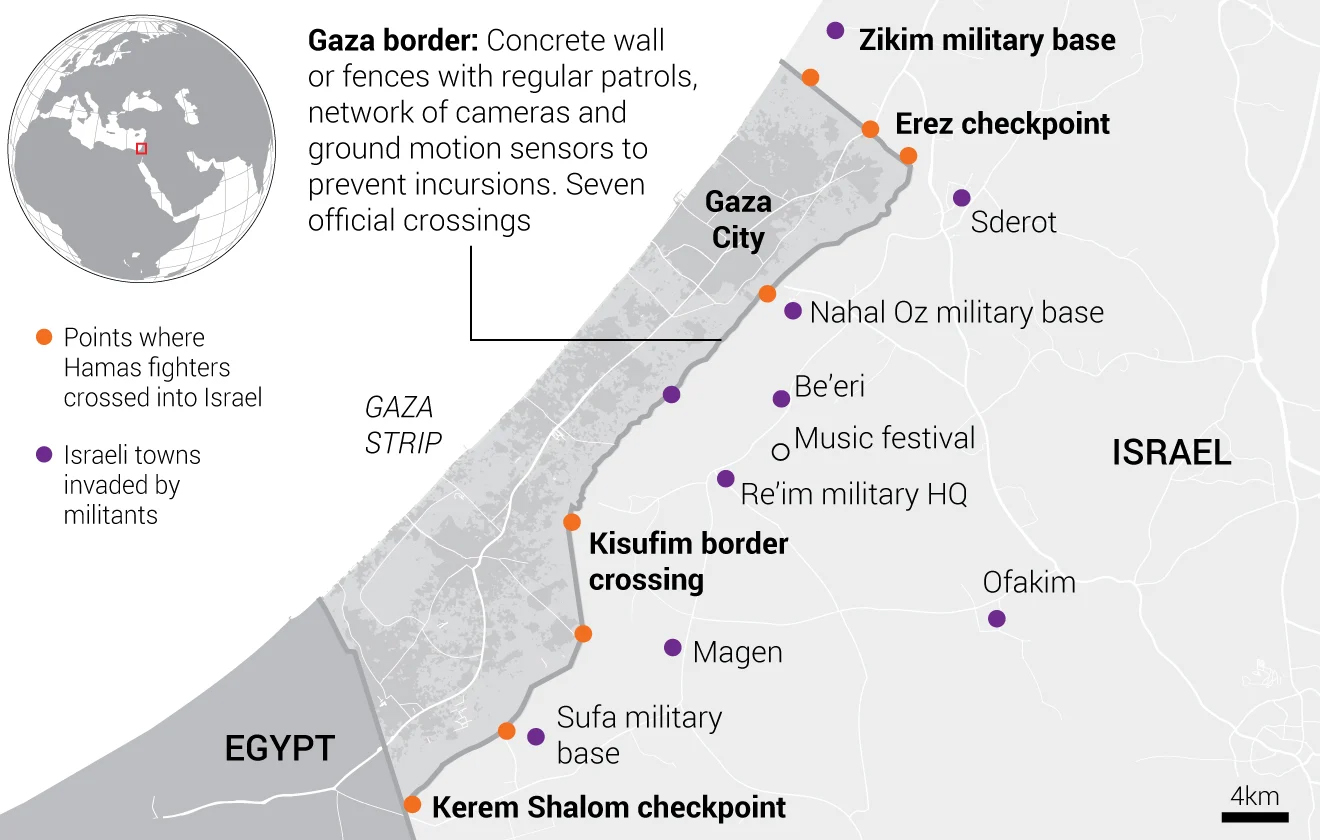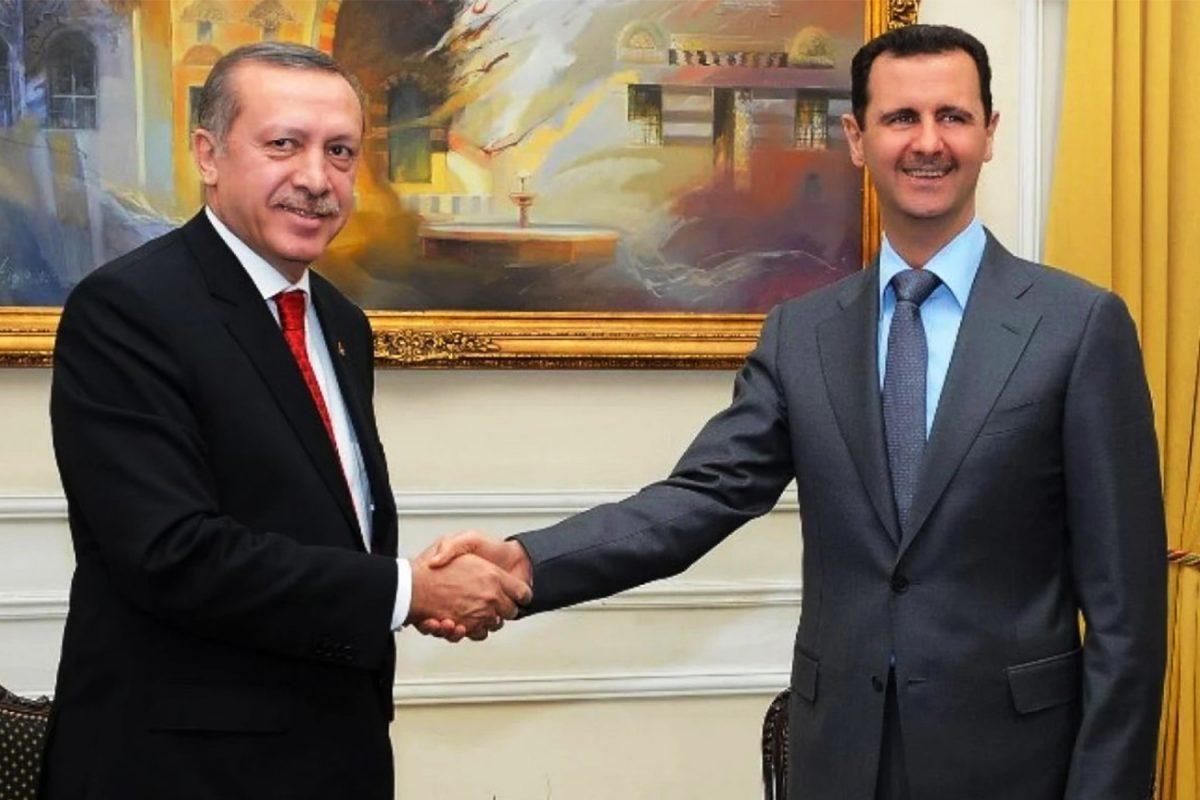On the morning of Saturday the 7th of October Palestinian resistance groups launched a large-scale invasion from the Gaza strip into Israel. Hamas called it operation al-Aqsa flood and shocked the Israeli authorities with its ground, air and sea attack that saw it reach 15 miles into Israel. The resistance groups secured strategic surprise, reached nearby Israeli communities and military installations, killing at least 1,000 Israelis in the process. Over 150 Israeli hostages have been taken which has undermined the appearance of Israeli intelligence invincibility and military superiority. Israel is on the verge of an imminent ground invasion of the Gaza Strip which threatens to spark another intifada, risks other armed groups joining the conflict and poses significant challenges to Israel in urban warfare.
Whilst much of the details are still emerging what we do know is Hamas and Palestinian Islamic Jihad (PIJ) launched 3,000 rockets from the Gaza Strip into Israel and, using this as cover, infiltrated Israel from Gaza using trucks, pickup trucks, motorcycles, bulldozers, speedboats and paragliders. The assault achieved surprise as Gaza based groups usually resort to firing rockets into Israel, but on this occasion using several points of attack they managed to reach Israeli towns and took a number of hostages, including soldiers. The assault saw the overrunning of military outposts, the seizing of weapons and equipment as well as the establishment of logistical lines from within Israeli territory. Teams of fighters on hang gliders and motorised paragliders, flew over the border and secured the terrain for the main ground assault.
The operation also saw an amphibious landing in Zikim which has never taken place previously. Hamas was able to capture the Re’im military base for a number of hours which is the headquarters of the Gaza Division. Israel needed to call in significant reinforcements to regain the base. After a number of hours Israeli forces were able to recapture bases and territory but sustained casualties including the death of numerous civilians.
The Palestinian groups that participated in the assault used the element of surprise and were able to create a number of temporary advantages in numbers and firepower. They meticulously planned their operations and exploited a range of gaps in Israel’s fortifications, operating procedures, and tactics. They employed tricks, tactics, subterfuges, and stratagems that they most likely had to devise and prepare, in many cases, over years. They took advantage of all kinds of holes they had painstakingly discovered in Israel’s defences.
Ground incursions from Gaza are extremely rare, with Hamas and Palestinian groups preferring to launch rockets and conduct skirmishes from within the strip itself, in part because the Gaza-Israeli border is patrolled and fortified by the IDF. How they were able to bypass these safeguards on this scale remains unclear.
Israel’s failure to detect the meticulous attack has led to accusations of an intelligence failure for the ages. Israel has long claimed it has the most extensive and well-funded intelligence agency in the region, and a network of informants and agents inside militant groups. It had failed to foresee the escalation and its likely investigations into the failure, after the dust has settled, will lead to dismissals.
Retribution
Israel’s chief military spokesperson said the Israel Defense Forces has called up a record 300,000 reservists, including key units needed for a ground invasion. These actions have set the stage for an Israeli ground invasion of the Gaza Strip in retaliation for the attack on the 7th of October. In preparation for the ground assault Israeli authorities ordered the ”complete siege” of the Gaza strip to cut off supplies of electricity, food, fuel, water and other goods and services to its approximately 2.3 million inhabitants.
But the Israeli invasion of the Gaza Strip, despite Israel’s well-trained and equipped soldiers, will be extremely challenging and will likely lead to unintended consequences.
The Gaza strip has a population over 2 million people who are extremely densely populated in 140 square miles. Hamas and the other resistance groups have constructed a vast series of hideouts, tunnels and traps from which to hide and attack Israeli soldiers. Any Israeli invasion of the strip will have to take into account the Israeli hostages Hamas holds. This is a unique reality for Israel who has never had to face such circumstances.
the Israeli invasion of the Gaza Strip, despite Israel’s well-trained and equipped soldiers, will be extremely challenging and will likely lead to unintended consequences
Any invasion by Israel faces the prospect of creating a new intifada, not only in Gaza but also in the West Bank, where tensions are already at a boiling point after the right-wing government has been attacking the al-Aqsa mosque. If Hezbollah opens a front in the north of Israel, this will split the Israeli military. A number of reports have highlighted the reason why the Israeli security services were caught out in Southern Israel is because the bulk of Israeli military resources were deployed in the West Bank due to settlement expansion and attempts to judaize the Al-Aqsa area.
The urban terrain will reduce the impact of Israel’s fire power. Urban terrain favours the defenders who know it better. Israeli soldiers, especially younger reservists who have no experience fighting in urban warfare in the strip, will lead to collateral damage which will have major implications for public opinion in Israel.
Israeli Prime Minister Benjamin Netanyahu promised that Israel’s reaction will ”…change the Middle East…” and that ”…what Hamas is going to experience will be difficult and terrible,” suggesting that he intends to take back control of the Gaza Strip. But if this is even achieved it will lead to major challenges for Israel.
The first would be how Israel will govern the territory. If the Gaza Strip was handed over to the Palestinian Authority (PA), who governs the West Bank, Israel will face the problem of a lack of support for the PA. If Israel tries to set up an alternative form of governance through a different Palestinian intermediary, it will also suffer from little legitimacy in the eyes of Palestinians. If Israel directly rules the territory, something the far-right parties that support Netanyahu’s government have long been calling for, this will lead to Israeli authorities having to directly rule over a population that is vehemently opposed to it. This would require a long-term and significant Israeli security deployment which would have to sustain new rounds of violent pushback from both organised groups and individuals. Israeli and international human rights groups already call Israel an apartheid state that occupies and oppresses the Palestinians. Despite the occupation, attacks have continued against the occupier.
Israeli officials have called the 7th of October attack as its 9/11 moment and already the 9/11 discourse is making the headlines. America’s solution to 9/11 was the war on terror and two decades on, terrorism is far worse, America’s occupation of Iraq and Afghanistan exhausted US resources and led to its inevitable and humiliating withdrawals. In Israel’s case, solving the occupation and the two-state solution are not even on the discussion table. This is despite all the checkpoints, occupation and restrictions on Palestinian lives. It’s likely after the Israeli invasion of the Gaza strip and years later, little will change as the underlying issue, the occupation, was never addressed.





